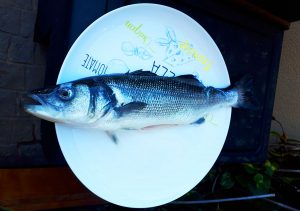Garfish – pelagic fish, average size 50-90cm and average weight 300gr-1kg. Garfish has a narrow, very elongated body, covered with very small scales of a pearly shade. Sharp teeth are located on the long jaws of the fish, shaped like a beak. Dorsal and anal fin set far back, almost at the tail. The scales are small, easy to clean. The mouth is strewn with tiny teeth, with which the garfish firmly holds the caught prey.
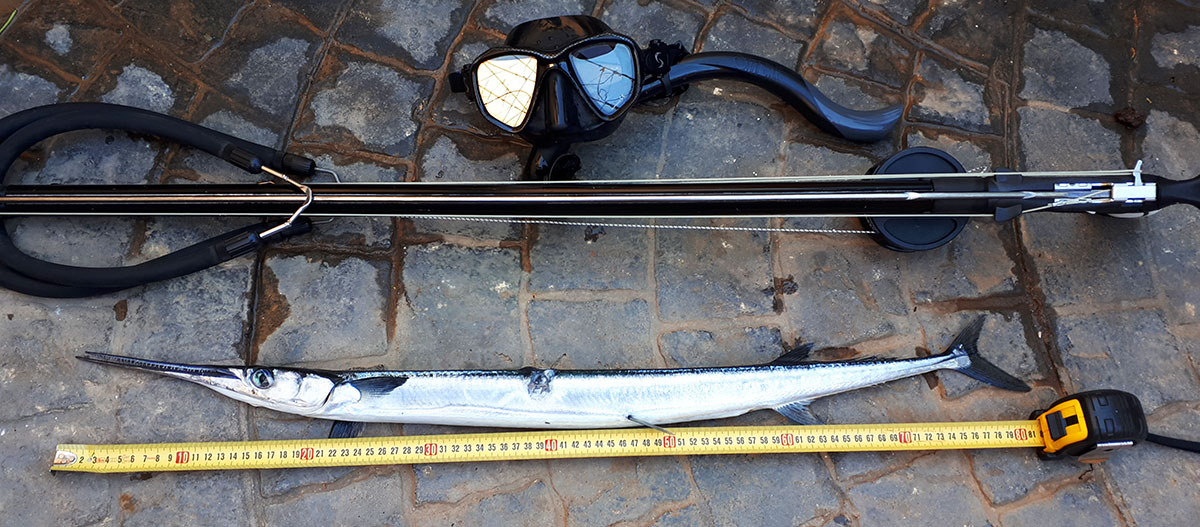
Garfish is common in moderately warm waters off the western and southern shores of Europe and North Africa: from Cape Verde to Iceland and Norway. During the day, as a rule, it is held in deeper layers of water, and on dark, quiet nights it rises to the surface. Garfish spawning occurs in the coastal strip, and eggs, equipped with adhesive threads, attach to algae and sea grass.
The pectoral and dorsal fins are located in the back of the body. Because of this, the flexibility of the garment increases significantly. A lateral line stretches from the pectoral fin to the tail, which in representatives of this species is significantly shifted down.
The caudal fin is bifurcated and has small dimensions. Garfish scales are small and have a distinct silver tint. In total, the body of the garment has 3 different shades: the top of the back is dark with a greenish tint, the sides are gray-white, but the belly has a very light shade with silver. The head of the fish at the base is very massive and wide, gradually tapering towards the end of the jaw.
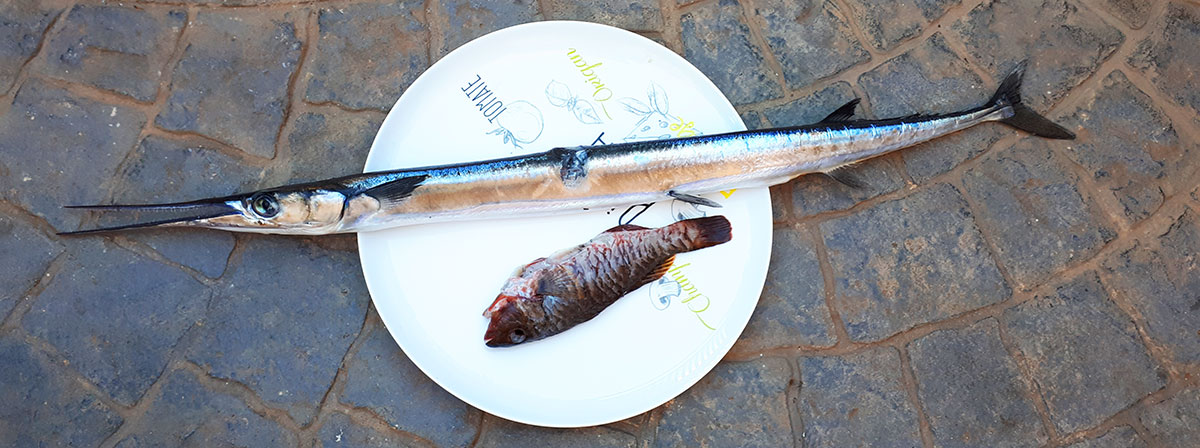
In the Atlantic Ocean, Hound needlefish (Tylosurus crocodilus) is found to be the largest representative of the garfish, sometimes called the giant garfish. Reaches a length of a little less than 2m and a weight of more than 6kg. They are found mainly near the coast and near coral reefs. Prefers to keep in small flocks or individually. Such fish are found off the coast of Tenerife (Canary Islands), one of which I caught you see in the pictures.
Garfish is a schooling fish that is kept mainly in the thickness and near the surface of the sea. Due to the specific shape of the body, the garfish is able to develop a sufficiently high speed of movement and make quick jerks, and sometimes, carried away by hunting, this fish even jumps out of the water. Various small fish, as well as crustaceans, serve as prey for the garfish.
Spearfishing tactics – personal experience
Explore the area off the coast (distance of about 10-50m) at a depth of 3-20m, leisurely swim with snorkeling and peer into the distance, trying to make out a flock.
After detecting without unnecessary movements, we try to get as close as possible and shoot. In case of a successful hit, you can try again to catch up with the same flock and try again.
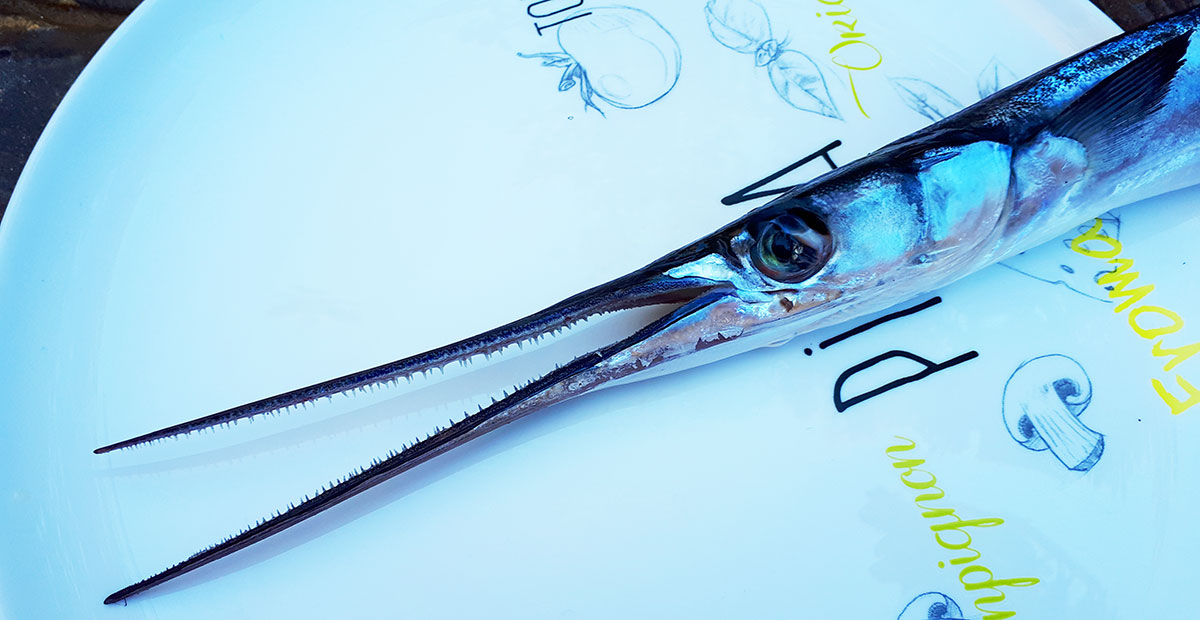
It is necessary to take care of the power of the shotgun, as such a fish is not always easy to shoot right through (you may need 2-3 elastic bands). After a successful hit, the fish actively fights and tries to bite everything that it can reach (gun, tench and, of course, your fingers), take care of strong gloves or try to grab the fish by the head and put it to sleep with a knife as soon as possible (for this you need to practically through incision in the head between the eyes).
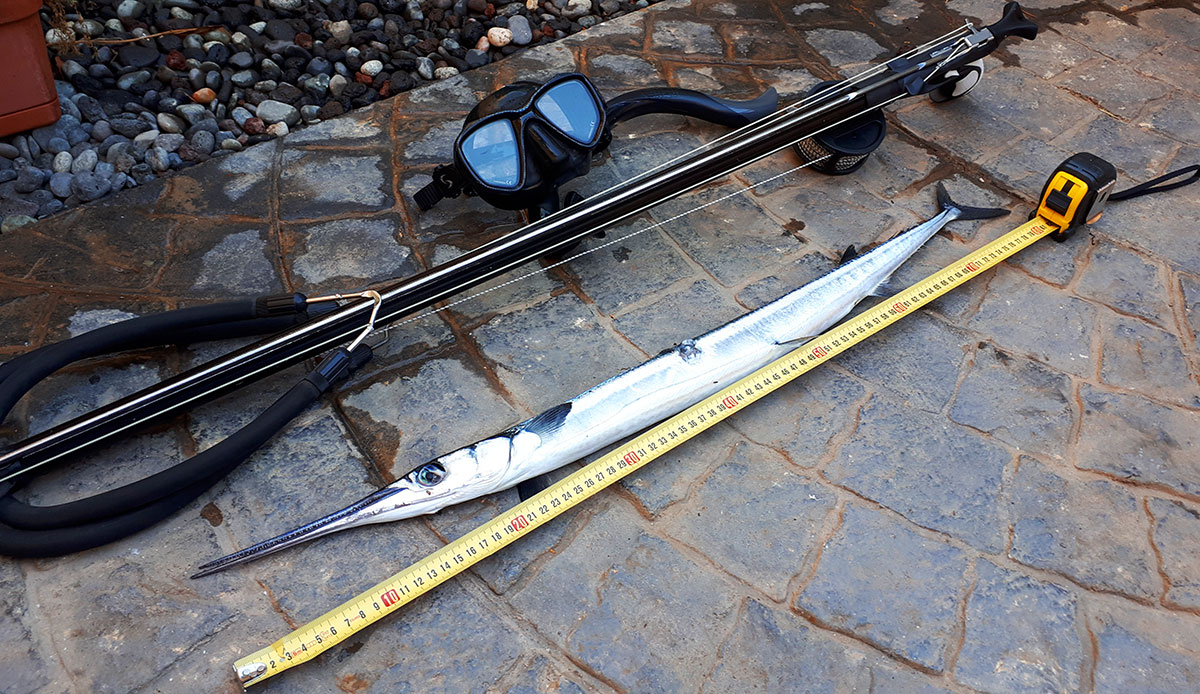
Some flocks are attracted by noise and you can suddenly come across such a flock, not paying attention to maintaining silence.

